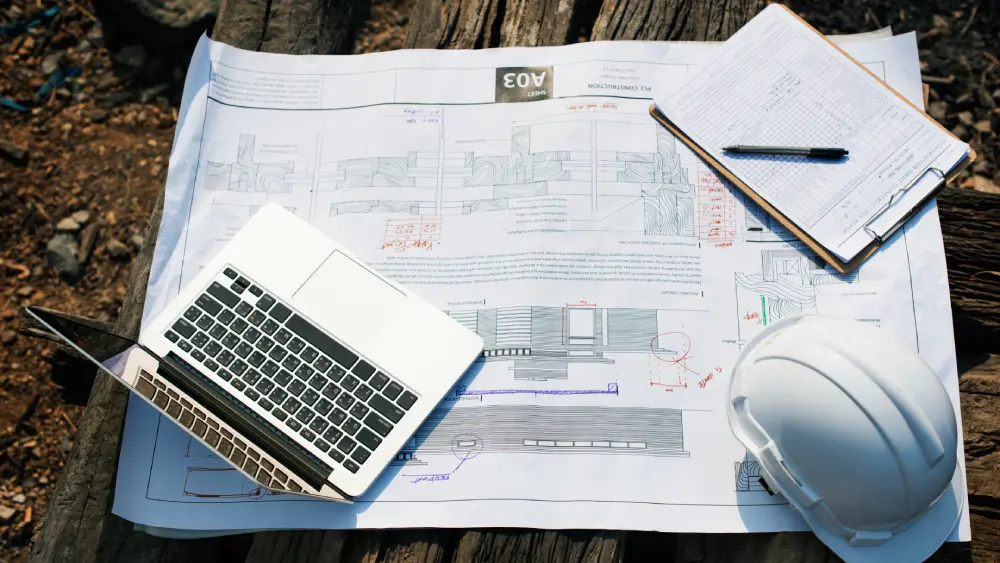Precision in handling heavy machinery prevents costly delays and inefficiencies. An equipment schedule in construction aligns cranes, excavators, labour and materials effectively. According to the Construction Industry Institute, poor equipment planning causes over 35% of project overruns, underscoring its vital impact on overall construction project management performance.
Defining the Equipment Schedule in Construction Projects
Picture a roadmap that lists every machine needed, from bulldozers to scaffolding, pinpointing when and where they’ll operate. The equipment schedule in construction prevents costly overlaps by detailing quantities and durations, integrating seamlessly with risk assessment in construction to spot potential hazards early. This alignment keeps sites humming efficiently, cutting unnecessary downtime.
Key Components of a Construction Equipment Schedule
Crafting a robust equipment schedule in construction hinges on blending specs, timelines, and compliance checks for flawless execution. These elements form the backbone, guiding managers to allocate assets wisely while upholding standards.Equipment Schedule: When to Use it and How to Make One
| Component | Description | Purpose in Project Management |
|---|---|---|
| Equipment Type and Specs | Details like model, capacity, and condition of machinery such as loaders or mixers. | Ensures right tools match tasks, avoiding mismatches. |
| Timeline and Allocation | Start/end dates, shift hours, and site zones for each item. | Optimises usage, reduces congestion, controls costs. |
| Maintenance and Safety Log | Records of inspections, repairs, and operator certifications. | Promotes reliability, complies with regs, boosts safety. |
Equipment Identification and Task Association
Start by linking each piece of gear to concrete jobs, like assigning a backhoe to foundation digging in phase one. This equipment schedule in construction approach, using examples from high-rises where tower cranes handle steel framing, curbs overbooking. It also syncs with crew assignments, creating harmony across the board.
Allocation Periods and Site Availability
Setting clear windows for machinery use streamlines traffic on busy sites, slashing rental fees through just-in-time delivery. Tools like MS Project or Primavera digitise this in the equipment schedule in construction, allowing real-time tweaks. Optimised allocation can cut idle time by up to 25%, according to a PMI report on infrastructure efficiency.
Maintenance, Status and Safety Notes
Embedding check-up routines and condition updates in the equipment schedule in construction safeguards against breakdowns. Adhering to Australian Work Health and Safety regs, it tracks intervals for oil changes or certifications. This proactive stance minimises risks, ensuring machines run reliably from groundwork to handover.
Integrating Equipment Schedule with the Construction Timeline
Syncing machinery timelines with the overall project Gantt chart highlights interdependencies, like waiting for excavators before pouring concrete. In an equipment schedule in construction, this harmony flags bottlenecks early. Synchronised schedules reduce change orders by nearly 18% in mid-scale builds, as noted in an ASCE journal analysis.
Steps to Create an Equipment Schedule for a Construction Project
Building an equipment schedule in construction begins with a collaborative blueprint that anticipates needs across phases. Site pros, estimators, and leads team up to craft a dynamic plan, using data from past jobs for realism.
- Assess Requirements 1.1. Inventory current fleet and rental options. 1.2. Factor in site constraints like access roads.
- Estimate Demand 2.1. Break down phases into tasks. 2.2. Project hours per machine type.
- Assign Resources 3.1. Map equipment to timelines. 3.2. Include buffers for weather.
- Validate Plan 4.1. Cross-check with budgets. 4.2. Simulate scenarios for risks.
- Monitor and Adjust 5.1. Use apps for live updates. 5.2. Review weekly with stakeholders.
Define Project Scope and Work Packages
Outlining the full build via work breakdown structures pinpoints machinery essentials, from compactors in roadworks to pumps in drainage. This clarity in the equipment schedule in construction avoids redundant hires. Tying into BIM models enhances predictions, letting teams visualise asset flows digitally for spot-on planning.
Estimate Equipment Demand for Each Phase
Forecasting ramps up per stage; excavation might claim 30-40% of total machine hours in infrastructure gigs, based on Austroads data. The equipment schedule in construction weighs variables like soil type or scale, ensuring no shortages. Realistic estimates, drawn from benchmarks, keep momentum steady without excess costs.
Develop, Review and Update the Schedule Regularly
Iterative tweaks via dashboards spot idle gear, refining the equipment schedule in construction as builds evolve. Software flags variances, promoting transparency. Weekly huddles align it with scope shifts, fostering a responsive setup that adapts to surprises like supplier hiccups.
Common Challenges and How to Mitigate Them
Even seasoned teams hit snags in rolling out an equipment schedule in construction, often from unforeseen variables. Spotting these early through audits keeps things on track.
- Data Inaccuracy: Fuzzy initial estimates lead to shortages; counter with historical benchmarks and peer reviews.
- Unavailability Spikes: Sudden breakdowns or vendor delays; build redundancies and contract backups.
- Maintenance Lags: Overlooked servicing causes halts; schedule preventive checks tied to usage logs.
- Subcontractor Miscomms: Clashing timelines; enforce shared digital platforms for visibility.
- Regulatory Hurdles: Compliance slips; integrate WHS audits from the start.
Adopting digital checklists and alerts streamlines fixes, turning pitfalls into quick wins.
Tools That Simplify Construction Equipment Scheduling
Platforms like Procore, Autodesk Build, and Buildxact revolutionise the equipment schedule in construction by merging logs, calendars, and alerts in one hub. These cloud tools enable seamless teamwork, letting field crews update status instantly while office folk analyse trends for smarter decisions.
Turning Equipment Data into Predictable Project Delivery
Harnessing analytics from past equipment schedules in construction sharpens future bids, slashing uncertainties for tighter deadlines. Firms using historical insights see up to 15% faster completions, per a McKinsey report. This data-centric mindset elevates Construction Project Management, cultivating excellence through foresight and agility.


